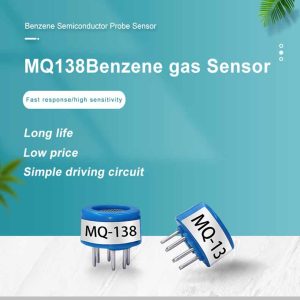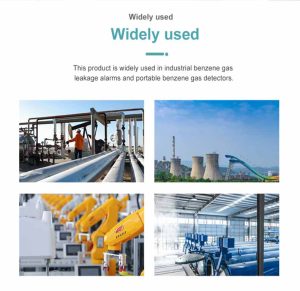Clean air is essential for a healthy and sustainable environment. However, with increasing industrialization, urbanization, and vehicular emissions, air pollution has become a pressing global issue. Poor air quality poses significant risks to human health, contributing to respiratory diseases, cardiovascular problems, and even premature death. To address this challenge, air quality monitoring has become crucial in identifying pollution sources, implementing effective pollution control measures, and safeguarding public health. In recent years, advancements in technology, particularly gas sensors, have revolutionized air quality monitoring, allowing for more accurate measurements and proactive interventions. This article explores the role of gas sensors in enhancing air quality monitoring and its implications for creating a healthier environment.
The Importance of Air Quality Monitoring:
Monitoring air quality is vital in understanding the levels of pollutants, identifying their sources, and evaluating the effectiveness of pollution control measures. Traditional monitoring methods rely on manual collection of samples, which are then analyzed in laboratories. However, these methods are limited in terms of time, location, and coverage. Gas sensors have emerged as a game-changer, enabling real-time, continuous monitoring of various harmful gases such as nitrogen dioxide (NO2), ozone (O3), carbon monoxide (CO), sulfur dioxide (SO2), and volatile organic compounds (VOCs). By providing accurate and timely data, gas sensors empower policymakers, researchers, and communities to make informed decisions regarding air quality improvement strategies.
Leveraging Gas Sensors for Improved Monitoring:
Gas sensors, also known as air quality sensors or air pollution sensors, play a pivotal role in enhancing air quality monitoring. These sensors utilize cutting-edge technologies such as electrochemical sensors, metal oxide sensors, and optical sensors to detect and measure specific gases present in the atmosphere. They can be deployed in various settings, including indoor spaces, outdoor environments, and even wearable devices. Gas sensors are capable of detecting low levels of pollutants, identifying sources of contamination, and transmitting real-time data to monitoring systems for analysis. This data-driven approach enables stakeholders to respond promptly with targeted interventions to mitigate air pollution.
Real-Time Data for Effective Decision-Making:
One of the significant advantages of gas sensors is their ability to provide real-time data on air quality. Traditional monitoring methods often involve time-consuming sample collection and laboratory analysis processes, leading to delays in obtaining results. Gas sensors eliminate this lag by continuously monitoring air quality parameters and generating immediate data outputs. This real-time monitoring capability allows for timely decision-making and implementation of pollution control measures. For instance, if high levels of particulate matter or toxic gases are detected, relevant authorities can issue public health advisories, enforce emission reduction measures, or initiate traffic management strategies to minimize exposure risks.
Identifying Pollution Hotspots and Sources:
Gas sensors are instrumental in identifying pollution hotspots and pinpointing the sources of contamination. By strategically deploying these sensors across different locations, patterns and trends in air pollution can be identified. This spatially-resolved data helps in identifying specific emission sources such as industries, vehicles, construction sites, or biomass burning. With this information, policymakers can design targeted interventions that address the root causes of pollution, leading to more efficient and effective pollution control strategies. Additionally, gas sensors facilitate research efforts in understanding pollutant dispersion patterns, optimizing urban planning, and implementing source-specific control measures.
Empowering Communities and Citizen Science:
Gas sensors have the potential to empower communities and individuals through citizen science initiatives. Portable and affordable sensor technologies enable citizens to actively participate in air quality monitoring efforts. By equipping citizens with the tools and knowledge to measure air pollution levels in their neighborhoods, communities can raise awareness, advocate for policy changes, and contribute to long-term environmental improvement. Citizen science initiatives promote collaboration between researchers, policymakers, and the public, fostering a sense of engagement and shared responsibility in creating a healthier environment.
Overcoming Challenges and Future Directions:
While gas sensors offer significant benefits in air quality monitoring, several challenges need to be addressed for their widespread adoption. These include sensor accuracy, calibration, maintenance requirements, interoperability, and data vali
 : +86 155 8830 2704
: +86 155 8830 2704 : jxdziot@gmail.com
: jxdziot@gmail.com
